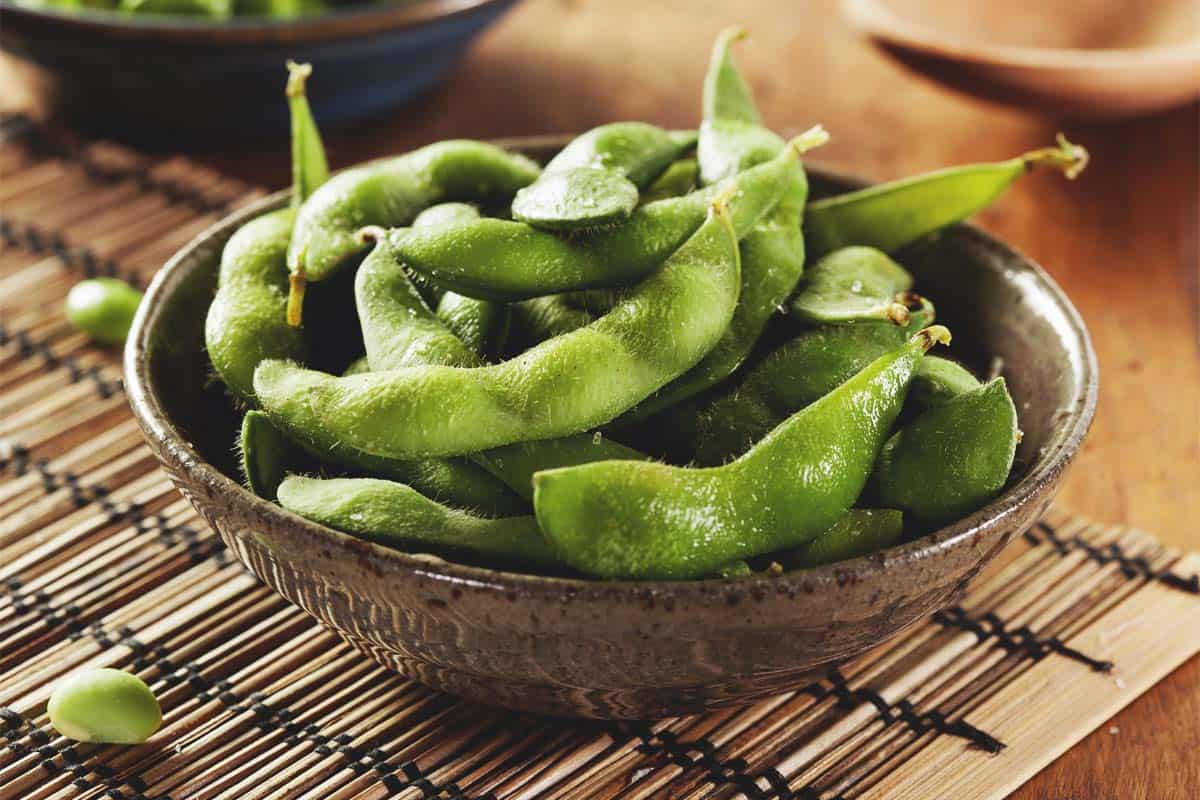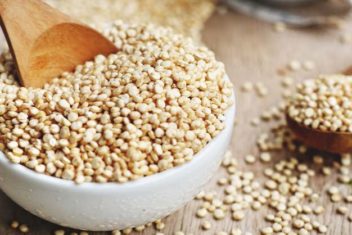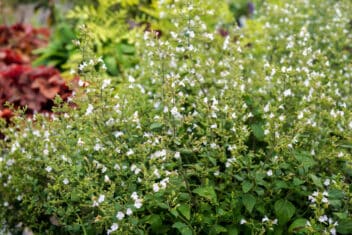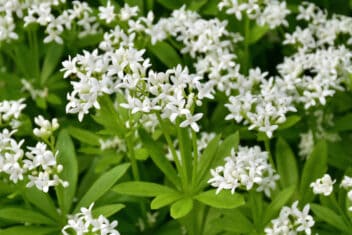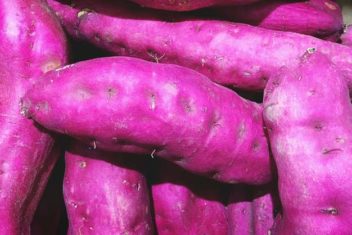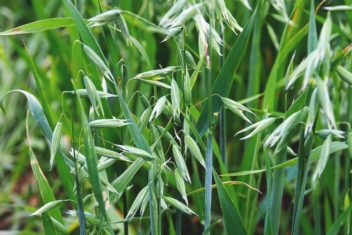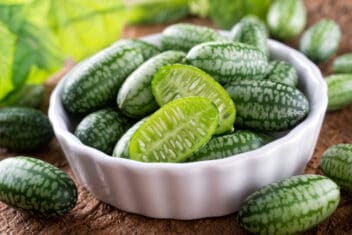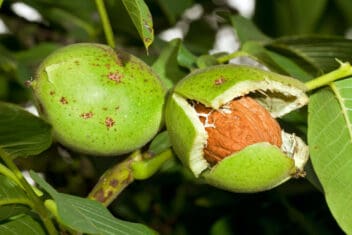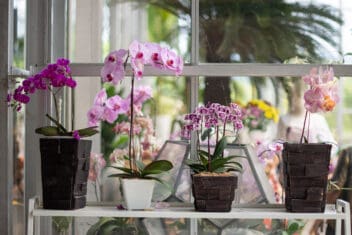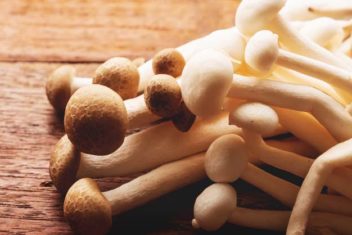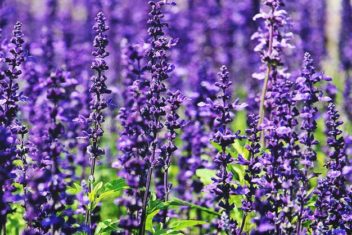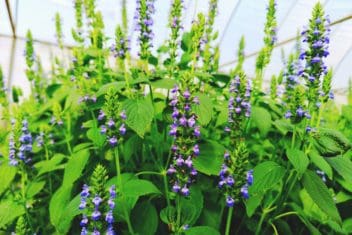I’ve never failed at growing beans. Even when I’m careless in my planting, and the weather goes a little haywire, I end up with a sizeable harvest. In other words, beans are easy to grow – and edamame is no exception.
Edamame is the first bean I planted when I started gardening. Although shelling them was a massive pain in the butt, the exceptional flavor was well worth the punishing task of hand shelling them all.
If you love to nosh on a pile of steamed, salted pods, or if you’re hoping to make your own tofu, learning all about growing edamame is the first step to success.
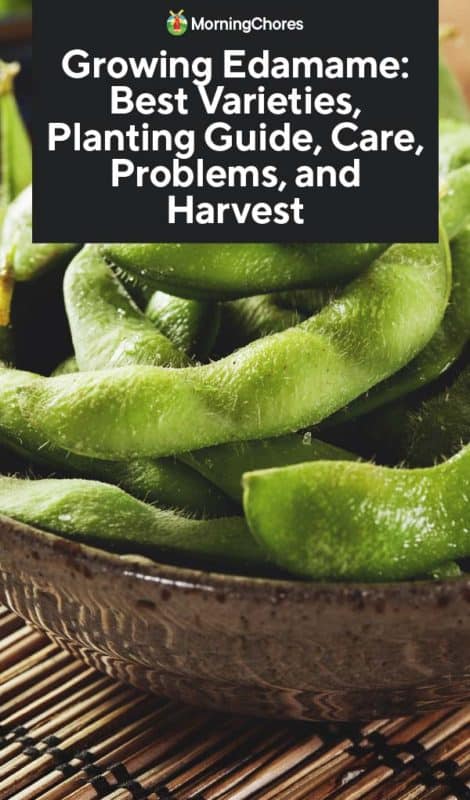
What is Edamame?
Edamame is a type of soybean, though only the dried form is used for making tofu and other soy products. The Asian bean has increased in popularity over the years and become a favorite garden plant.
Their popularity stems from the fact that they’re extremely nutritious. Edamame beans are packed with protein and vitamins, including vitamin E. They’re also rich in antioxidants and contain a lot of fiber to help with digestion.
There’s evidence that eating edamame can help lower heart disease risk factors and help control cholesterol. Eating them also won’t spike your blood sugar, and some research shows that the isoflavones found in edamame may help reduce breast cancer risk.
Besides all that, edamame makes an excellent, filling snack.
Edamame varieties
Unlike other types of beans, edamame has a long maturation period and are sensitive to cooler temperatures. Most varieties set 2-3 beans per pod.
- Agate: Heirloom variety that produces small brownish-green beans.
- Black jet: Dark-colored version of edamame.
- Butterbean: One of the tastiest varieties of edamame. Beans grow on small plants and plant regularly produces 3-pod beans.
- Chiba Green: An edamame variation with large pods and a darker green color. Slightly earlier to mature than Midori Giant. It does well in many U.S. regions.
- Karikachi: Produces tall plants with a heavy yield and long harvesting period.
- Kuroshinju: Early maturing and full of antioxidants. Sweeter than other varieties and great for eating fresh or freezing.
- Envy: An excellent choice for market gardeners. The short-season type is suitable for fresh beans or for drying.
- Lucky Lion: Delicious fresh-eating edamame that frequently produces at least three beans per pod. Suitable for regions with cooler nights.
- Manitoba Brown: Brown colored bean. Variety is semi-determinate.
- Midori Giant: A variety that’s early to mature and regularly produces pods with two to three beans.
- Tohya: A flavourful variety that produces a high percentage of 2-3 bean pods. Excellent for fresh eating.
Pay close attention to how long a variety takes to reach maturity. If you live somewhere with cool summer nights or a short growing season, pick a variety to match your region’s conditions. Choosing the wrong type may leave you with a meager, disappointing harvest.
Planting Edamame
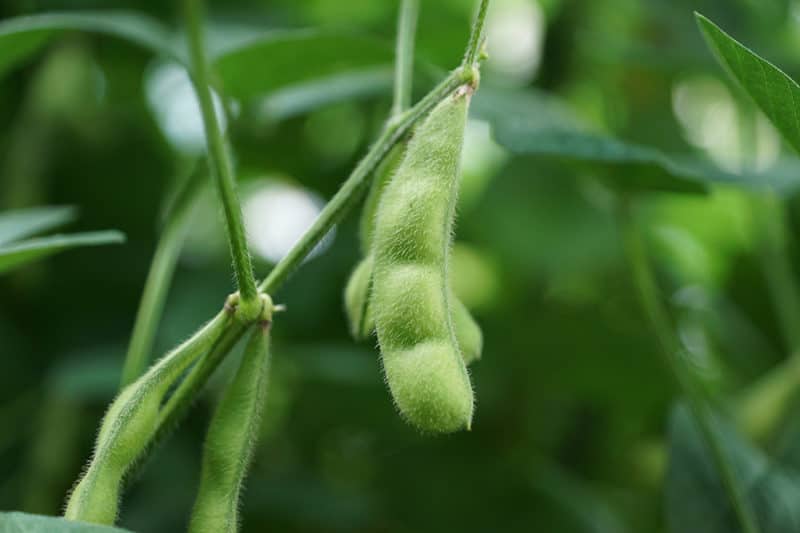
Growing Zones
If the weather is consistently warm, you should have no trouble growing this flavorful, nutty-tasting bean. In colder regions, it may be more challenging to grow edamame, especially if the nights are cool. Some extra effort is required in areas with short summers and unpredictable weather. Edamame grows in zones 3-9.
Sun Requirements
Plant edamame in full sun.
Soil Requirements
Soil type doesn’t matter much when picking a spot to plant edamame, which is the case with many kinds of beans. The ground should be well-draining, though. Ideally, you’ll give edamame sandy, loamy, fertile soil with a pH of 6.5.
When to Plant
Edamame likes it hot, so wait until the chance of frost has passed before sowing the seeds. Planting them around the time you transplant your tomatoes is a good rule of thumb to follow. The soil should be around 55°F.
Don’t bother starting edamame seeds indoors. Beans don’t take well to being transplanted. They fare better when directly sown.
They do, however, take a little while to mature, so keep this in mind when planning out your planting schedule.
Support
Edamame grows similarly to bush beans, so whether you provide support is up to you. In windy areas, they may benefit from some type of trellis or support structure.
Spacing
Try not to crowd your bean plants to prevent a messy, clump from forming. Keep plants 9-inches away from one another in a square-foot gardening layout. In rows, plant them 3-inches apart with 2 feet between rows. Plant seeds 1-2 inches deep.
Caring for Edamame
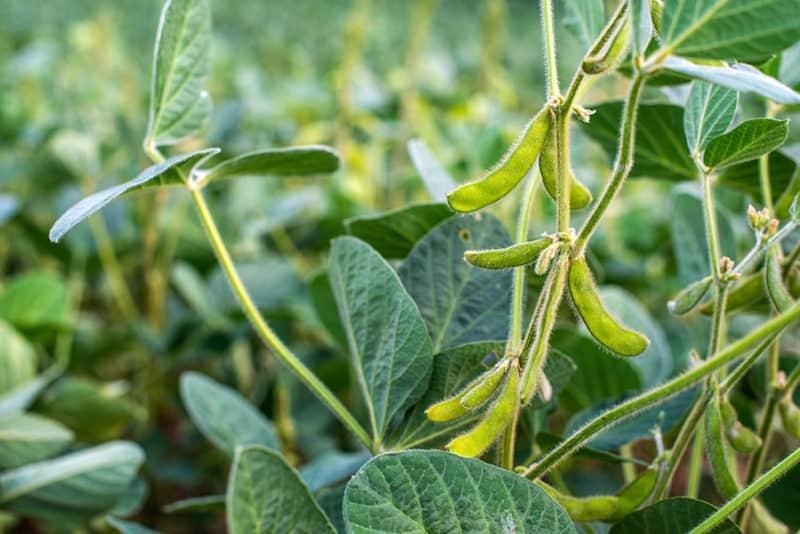
Here’s a quick breakdown of what you need to do to keep your plants alive after planting them.
Watering
Regular watering ensures eventual pod production. Watering is especially important once the plant begins producing flowers. Keep moist but not saturated.
Weeding
Take care when weeding not to disturb the roots of the plant.
Fertilizing
All that’s required is a bit of compost or all-purpose fertilizer mixed into the growing area before planting. Edamame seldom needs further fertilization.
Mulching
As with beans, mulch around the base of the plants to prevent weed competition and to conserve moisture.
Succession Planting
It’s possible to space out plantings for a steady supply of beans, but avoid planting too late in the summer. Edamame is frost-sensitive and will die when exposed to cold weather. It’s not worth wasting seed late in the season.
Pruning
You don’t need to prune beans, edamame included.
Crop rotation
Plant edamame in areas where you previously grew nitrogen-sucking plants. As all beans do, edamame fixes nitrogen in the soil.
Problems with edamame
Growing edamame is a fairly straightforward endeavor, but there’s always a risk of pest and disease.
Pests
- Japanese Beetles: A common pest that attacks all types of bean foliage is the Japanese Beetle. Physical barriers are your best option for keeping them away. Otherwise, handpicking and dunking them into soapy water is a quick-fix. A direct blast with the garden hose also takes care of the feasting pests temporarily.
- Animals: Small mammals like rabbits and woodchucks, along with deer are another potential problem. Barriers are some of the only practical tools to prevent crop devastation.
Disease
- Powdery Mildew: One of the most common diseases affecting edamame is powdery mildew. Affected plants appear to have a light dusting of flour, and foliage eventually turns yellow and begins to wilt. Plants infected with powdery mildew should be disposed of in the trash. A fungicide may be helpful, but I prefer to get rid of plants to prevent the spread of disease elsewhere – especially since this particular fungal infection can affect a host of other plants.
- Frogeye Leaf Spot: This fungus is especially prevalent in warm are moist areas. You’ll notice irregular spots with dark brown centers on the upper surface of the leaf. A minor infection isn’t a big deal, but it can progress and damage crops. Rotate your crops, use resistant varieties from certified seeds, and use fungicides if the infestation gets bad.
- Rust: Most beans are subject to rust, but it’s common in warm, humid areas. You’ll notice round reddish spots on the leaves. Again, rotate your crops and plant resistant varieties.
- Bacterial Blight: This bacteria shows up as brown areas with a yellow border on the leaves and sunken spots on the pods. Use certified disease-free seed and rotate your crops. You can spray plants with copper if you catch this early.
Other Problems
Here are a few common problems you may encounter when growing edamame.
My edamame seeds aren’t sprouting
If it’s too cold outside and the soil is not warm enough (at least 55°F), the seeds will fail to emerge from the dirt. Wait until the soil has warmed enough to plant seeds.
My edamame plants are falling over
There are two possibilities here. Windy weather is toppling your crop, or you have a cutworm problem. If there’s a noticeable cut at the base of your plant, the latter is the likely culprit. You can install collars around your plants to prevent cutworm damage.
The flowers on my edamame plant are falling off
This usually has to do with temperature inconsistencies. Blossom drop occurs when it’s too cold at night and when it’s too hot during the daytime. Other types of stress may also cause flowers to drop: excess fertilizer, windy conditions, and` not enough sunlight.
Flowers aren’t producing pods
Your plants may not have access to the nutrients required to set fruit. Too much nitrogen has a similar effect.
There are no edamame inside the pods
Uh oh! That’s no fun! You’ve been patient all this time, and the pods are empty? The issue might stem from irregular watering. Pest infestations may also reduce your plant’s productivity.
My edamame plant only has a few beans per pod!
That’s normal! Most varieties produce between 2-3 beans per pod.
The leaves on my plants are skeletonized!
Yep. That’s the unfortunate result of a Japanese Beetle infestation. See the pest section above for information on how to deal with them.
Companion Planting for Edamame
Thanks to the nitrogen-fixing capabilities of beans, edamame is a great companion to the following:
- Corn
- Squash
- Cucumbers
- Potatoes
- Marigolds
- Strawberries
- Celery
Don’t try growing edamame next to allium family vegetables (onions, garlic, chives, etc).
Harvesting Edamame
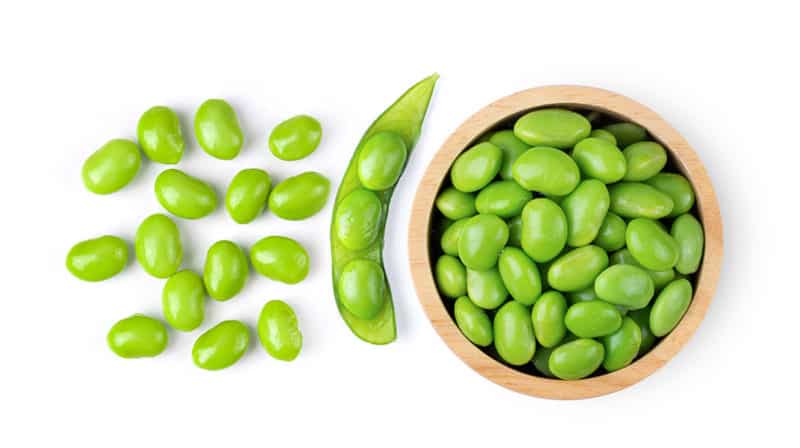
Harvest the bean when it’s still fresh and green, and about 2-3 inches long. The pods should be plump and bright green, not dry and rattling. Most edamame plants produce all their beans at one time. I prefer to use scissors to harvest them to prevent structural damage to the plant.
Fresh beans can be stored in the fridge for a few days. You can freeze the pods if you want to keep them longer.
Leave the pods to dry if you wish to harvest to make soy products or to save seeds for planting next year.
Cooking with edamame
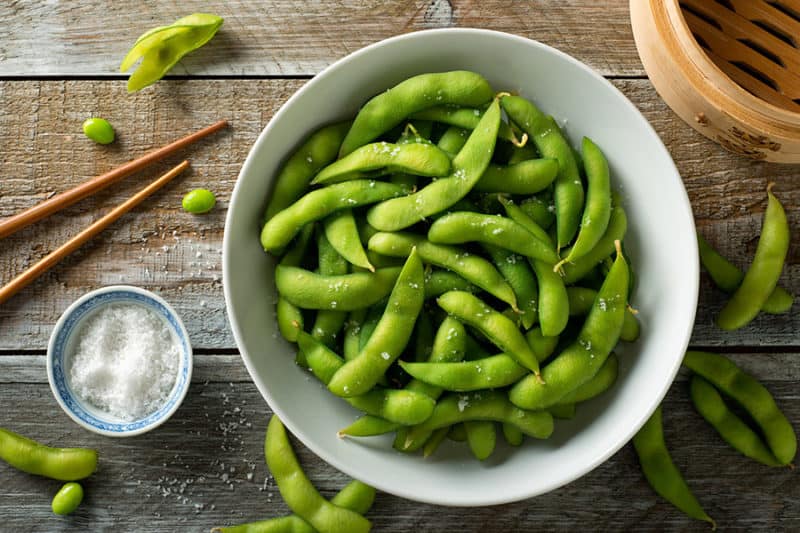
Edamame became famous in the U.S. as an appetizer steamed whole and salted, but it’s also delicious shelled. Shelled beans are used in stir-fries and other dishes. Here are a few edamame recipes to try:
This fresh-tasting salad with ginger-soy vinaigrette has plenty of bright flavors and lots of protein-filled edamame:
If you want something simple, check out this salad with plenty of texture coming from the nutty edamame, peanuts, and nutritious quinoa.
Need something to dip your vegetables in? Try this edamame hummus for a twist on the classic favorite.
This is an easy variation of the regular snacking edamame that you’ll find yourself gravitating towards even when there’s other crunchy fare on hand. The garlic makes it stand out.
Try this simple crunchy snack that uses shelled edamame. It makes a great snack for parties or gatherings.
The Last Word on Growing Edamame
If you’ve ever tried growing other beans, you’ll have no trouble growing edamame. One bush will give you tons of healthy pods that you can use in a variety of recipes or steamed fresh with a dash of salt. Let us know your favorite way to prep them in the comments.
